Sea ice
The importance of the sea ice and its state of health
The sea ice is a floating ice sheet that forms in the polar ocean regions. The survival of, for example, polar bears depends primarily on the early formation of this icy surface, as it is here that they hunt. According to satellite observations that began in 1979, the average maximum extent of the Arctic during the months of March is decreasing decade by decade, confirming a worrying trend.
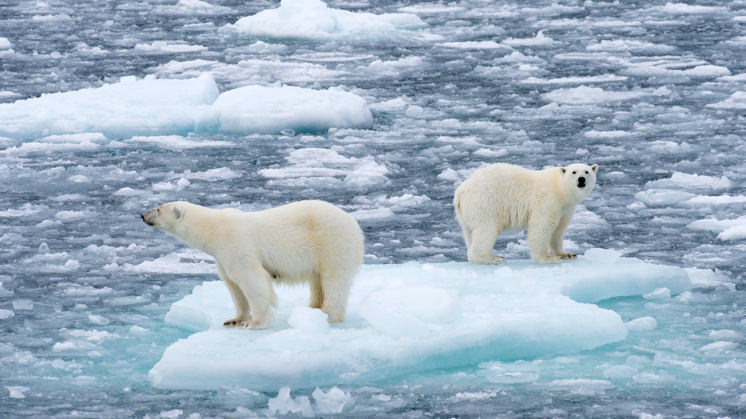
Human activity is causing the Earth's average temperature to rise, which is having a particular impact at the poles, where both sea ice and glaciers are seeing their surface area shrink year by year. Climate change is a reality and the state of the sea ice caps is one of the thermometers that warns of the seriousness of the situation and the urgency of taking measures, not only to protect ourselves, but also the biodiversity of the area.
What is sea ice
The ice shelves, present in both the Arctic and Antarctic throughout the year, are composed of frozen ocean waters over a wide but variable extent depending on the time of year. For example, during the winter months, the Arctic ice shelf increases in size until it reaches its maximum extent in March and loses ground during the following months. Its thickness ranges from one metre when it is renewed each year to four or five metres when it persists over time, which is the case in the areas closest to the poles.
The formation process is as follows: salt water freezes at a lower temperature than fresh water, specifically at -1.8 ºC, in a phenomenon known as cryoscopic descent. The sun's rays reach this area of the planet very weakened, and solidification begins at the surface because the lower part of the planet is warmer. Subsequently, small lenticular crystals of pure water are formed, which eventually coalesce to form a completely frozen sea floor.
There are two ice sheets on our planet: the Arctic ice sheet at the North Pole and the Antarctic ice sheet at the South Pole. These ice sheets have opposite tendencies as they are in different hemispheres, i.e. the northern winter coincides with the southern summer and vice versa, which means that when the Arctic ice sheet is at its maximum, the Antarctic ice sheet shrinks considerably.
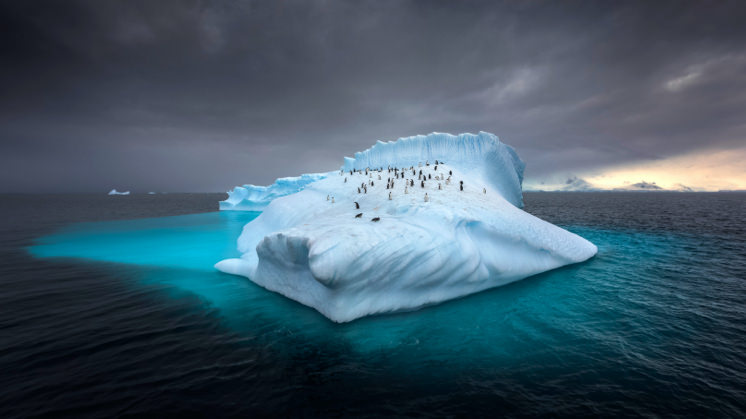
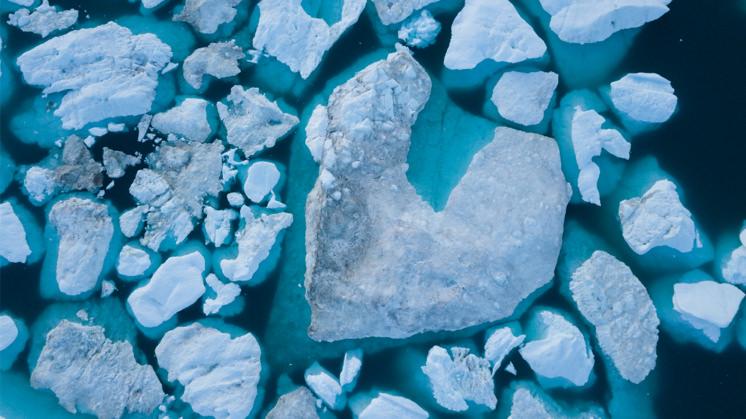
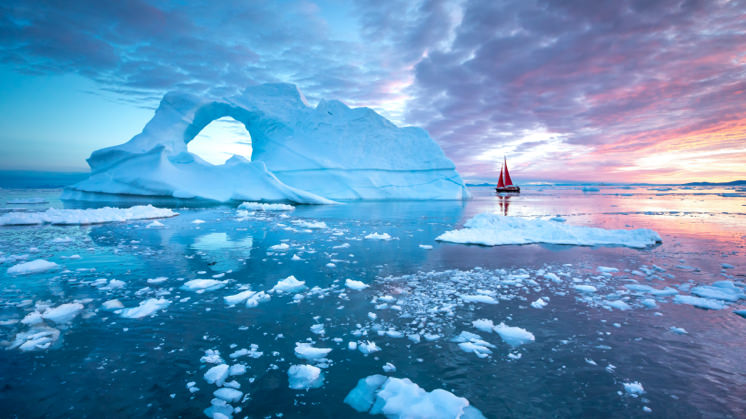
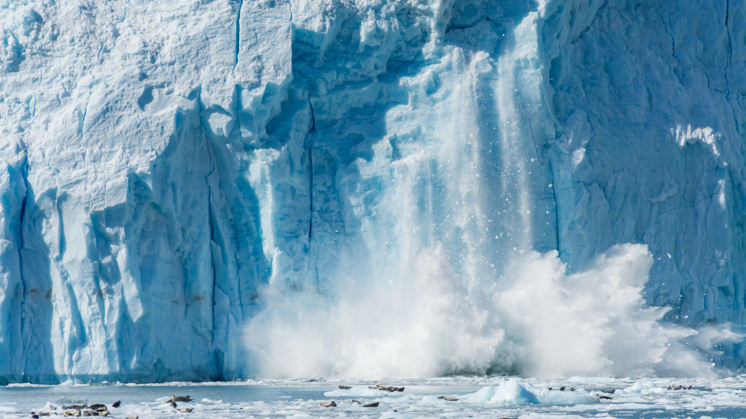
 Arctic sea ice
Arctic sea ice
In the northern hemisphere of the planet is the Arctic ice floe. The frozen ground, mainly Greenland, melts each year in the areas closest to the surrounding continents, which is used to navigate the Arctic Ocean. This ice sheet undergoes changes throughout the year, reaching approximately 15 million km2 in March and decreasing to 6.5 million km2 in September.
 Antarctic sea ice
Antarctic sea ice
Located in the Earth's southern hemisphere, the surface area of this ice floe varies even more dramatically throughout the year, at times almost disappearing. At the height of the cold season, known as the polar night, the area can reach 18.8 million km2. However, during the polar day — the next six months when the sun never sets — it can shrink to 2.6 million km2.
The importance of sea ice and their current status
Ice shelves are essential because of their ability to modulate the balance of atmospheric and oceanic heat. How do they do this? During the summer they reflect a significant part of the sun's radiation and during the winter they act as an insulator. In other words, ice shelves help keep the poles cool by limiting heat absorption. Given their importance, it is worth asking about their current situation.
According to NASA's National Snow and Ice Data Centre (NSIDC), Arctic sea ice reached its annual maximum for 2021 on 21 March, standing at 14.77 km2. This is the seventh lowest since satellite observations began in 1979 — the all-time low was in 2017 — confirming a negative trend that is worsening decade by decade.
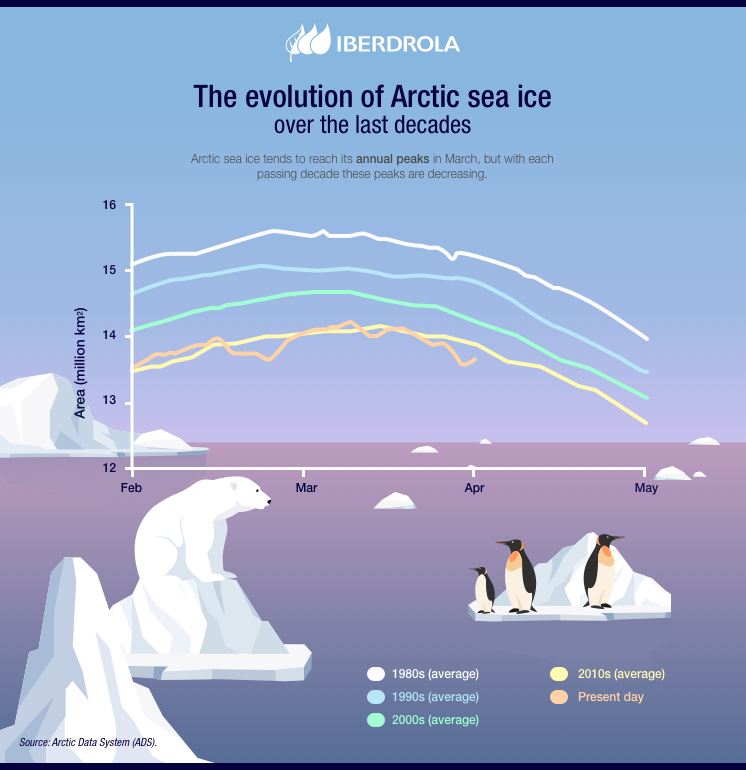
In addition to the overall decline in Arctic sea ice, the NSIDC researchers stress that the ice surface is becoming younger and more seasonal. In other words, it is weaker and more vulnerable to severe weather events such as those resulting from climate change. This also affects the surface of the Antarctic ice sheet, which, despite its particular idiosyncrasy — a more accentuated variability — follows a negative trend similar to that of the Arctic, in fact, in 2017 it also reached its historical minimum.
Biodiversity on the sea ice
Global warming is one of the major triggers for the loss of ice cover, which significantly affects ice floe biodiversity and is a concern for environmentalists around the world. In fact, almost a decade ago, the University of New South Wales (Australia) warned that a third of polar seabed biodiversity was under threat as a result of climate change.
Polar bears, together with seals, crustaceans such as krill and fish, form a food chain which, if this problem is not solved, could be considerably affected and destroy the delicate balance of the sea ice ecosystem. The most dramatic case, and the one with the most devastating images, is that of the polar bears, as they need the ice floe to move and hunt, in short, to survive, and the reduction of its extension endangers their habitat.




